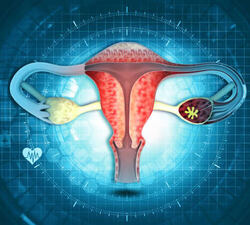Fibroids, also known as leiomyomas, myomas, uterine myxomas or fibromas are abnormal growths that occur in or on the uterus.
These can be of varying sizes and can grow at a different rate, ranging from smaller than pea size to growing up to the size of a watermelon. Irrespective of sizes, all fibroid conditions need proper & effective treatment.
The size and type of fibroids can affect the procedure of treatment. It depends on the fibroids and their risks to decide if they could be treated with medication or need surgery to take it out.
Majorly there are three types of fibroids:
These are the most common type of fibroids which appear in the muscular wall of the uterus. This type of fibroids tend to grow larger & stretch the womb.
These are relatively rare types of fibroids that occur in the myometrium or the middle muscle layer of the uterus.
Serosa is the layer outside the uterus. Subserosal fibroids develop on this layer & can get very big and make the womb appear bigger on one side.

Symptoms vary from one patient to another depending on the location & size of fibroids.
Further, if the tumour is small or if the patient is going through menopause, she may not experience any symptoms at all.
Here are the more common indications of fibroids:
A fibroid can easily be diagnosed with the help of ultrasound and MRI. Ultrasound uses sound waves, which are sent in the uterus to detect the fibroids, whereas, in MRI, an image of the uterus is formed from radio waves.
With advanced science and medical technologies, few easy and completely safe medical procedures remove fibroids.
Laparoscopic myomectomy, also known as Robotic Myomectomy, is a super-advanced medical procedure that helps in removing fibroids from abdominal incisions through a simple surgery. Myomectomy procedure is advised to those who want to remove fibroids, as it is causing the problem and preserve their uterus. Laparoscopic myomectomy is the most appropriate, effective, and safest procedure.
Hysteroscopic Myomectomy is a procedure that is performed for removing smaller fibroids on the uterus wall. A small medial telescopic instrument is passed through the cervix to have the surgery performed inside the uterus. This procedure is done in the operating room under the influence of anaesthesia. Some of the complications faced during this surgery are the formation of scarring inside the uterus wall and uterine perforation.
In the case of a non-prolapsed uterus, a [NDVH] Non-descent Vaginal Hysterectomy is performed, which is a type of vaginal hysterectomy. It does not leave a scar on the body as the procedure is done by the best gynaecologist surgeon who performs the surgery to remove the uterus through the vaginal opening. This procedure does not involve any incisions. It ensures fast recovery and lesser stay in the hospital—the maximum number of days you need to stay in hospital after the procedure is two days.
Fibroids rarely have dangerous health complications. However, some symptoms can cause problems in your day-to-day routine like heavy bleeding, pressure on the pelvic area, and more.
In some cases, Fibroids can also cause problems such as difficulty getting pregnant, repeated miscarriages, or infertility.
Dr. Sarada Mamilla is an expert Gynecologist with over 20 years of experience in successfully treating fibroids. She is specialised in performing hysterectomy to treat fibroids.
Are you an international patient looking for the best gynecological care in India? Consult Dr. Sarada Mamilla, the best gynecologist & Laparoscopic Surgeon in India, offering top notch care for complex cases of uterine fibroids, endometriosis, adenomyosis & gynecological malignancies.
Copyright © 2023 All rights reserved By Dr.Sarada